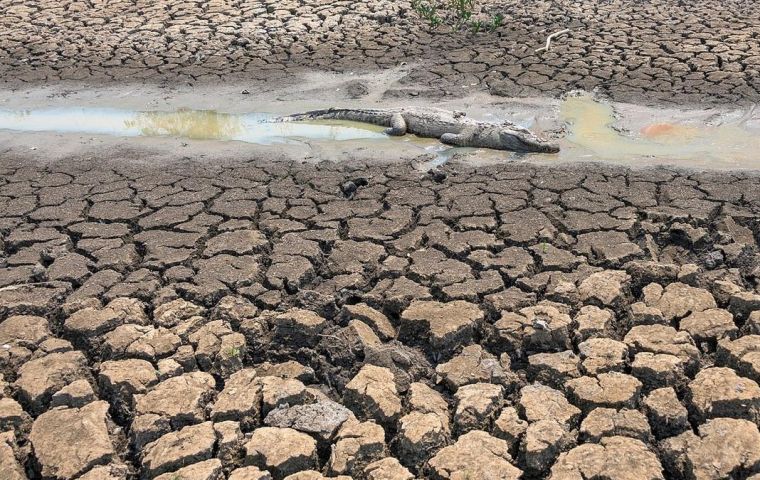MercoPress. South Atlantic News Agency
Drought in Brazil reaching unprecedented limits
 Climate change and El Niño are among the factors contributing to this phenomenon
Climate change and El Niño are among the factors contributing to this phenomenon According to Brazil's National Center for the Monitoring of Natural Disasters (Cemaden), South America's largest country is facing the most severe drought in its recent history. The agency also noted that more than one third of the country was affected by “extreme drought.”
Cemaden's Ana Paula Cunha told G1 that Brazil had never recorded “such an extensive and intense drought as this one” since records have been kept starting in 1950. “Before, only isolated regions suffered drought cycles, but this time it is a general phenomenon,” she added.
The current phenomenon also jeopardizes hydroelectric power production, with some regions isolated and hit by low water levels in some rivers that are thus no longer navigable.
Experts agree that the drought does not have a single identifiable cause, but is rather the result of the convergence of several factors, including the “El Niño” which has upped temperatures and diminished precipitations nationwide. Atmospheric blockages caused by stationary high-pressure zones have also had a decisive influence, making it difficult for cold fronts to pass through, which could increase rainfall. In addition, a warmer northern tropical Atlantic has led to an increasingly longer dry season.
Around 2,700 man-caused fires have ripped through Brazil's southern Sao Paulo state over the last week, destroying over 59,000 hectares, including vast swaths of sugar cane fields, one of the country's top exports.
“We had an explosive combination of three factors: high temperature, very strong winds, and very low relative humidity in the last few days,” Sao Paulo Governor Tarcisio de Freitas explained.
Brazil's dry period usually lasts from August to October. But climate experts said this past June was the country's “driest, hottest, and windiest.”
In addition to the plight in Sao Paulo State, record fires were also detected in the Cerrado Plateau, a tropical savanna, and the Pantanal, the world's largest tropical wetland, a biodiverse area packed full of different species of plants and animals. The Pantanal, located between the Amazon and Sao Paulo, lost some 600,000 hectares to the flames in June. Scientists said the Pantanal fires had been “40% more intense due to climate change.”
Satellite images monitored by the Brazilian environmental institute MapBiomas showed in June that the Amazon and Pantanal regions were facing a serious reduction in water. The Pantanal biome dried up the most in 2023, recording a 61% decrease compared to the 1985 historical average. The Amazon rainforest experienced a historic drought from June to November 2023, driven by low rainfall and persistent high temperatures.




Top Comments
Disclaimer & comment rulesCommenting for this story is now closed.
If you have a Facebook account, become a fan and comment on our Facebook Page!